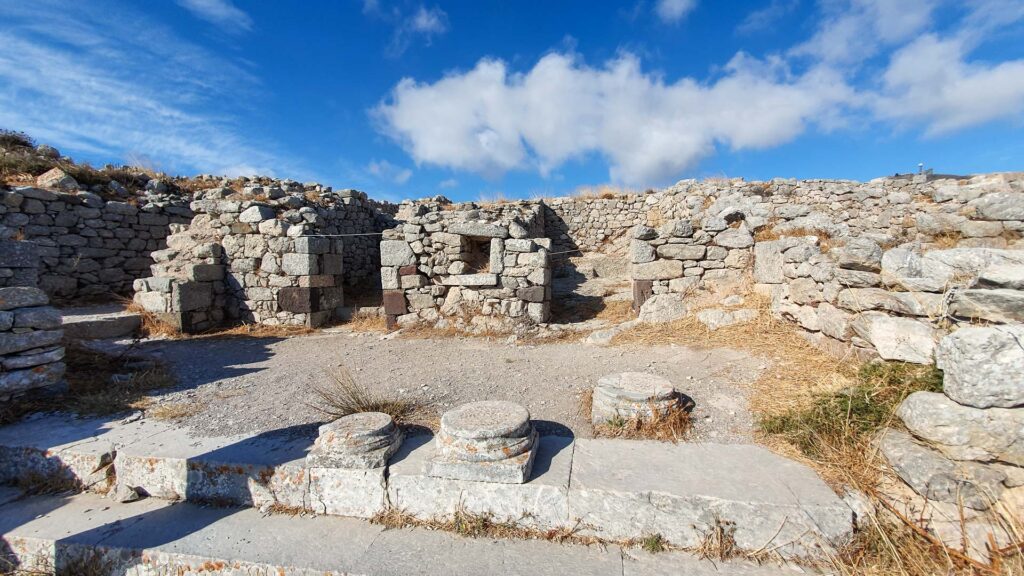Imagine yourself stepping back in time as you embark on a captivating journey through the fascinating ruins of Ancient Thira, nestled on the enchanting Greek island of Santorini. As you explore the remnants of this ancient city, you not only witness the remarkable architectural beauty but also uncover the rich history and cultural significance that permeate the island. From awe-inspiring temples to well-preserved frescoes, every corner of Ancient Thira holds a captivating tale waiting to be discovered and shared. Join us as we delve into the depths of this extraordinary archaeological site and experience the wonders of the Greek islands’ rich history.
The Ruins of Ancient Thira: History and Exploration Greek islands
Ancient Thira, located on the picturesque Greek island of Santorini, is a captivating archaeological site that offers a glimpse into the rich history of the Greek islands. From its origins in prehistoric times to its influence on Greek culture, Ancient Thira holds significant importance in understanding the ancient Mediterranean world. This comprehensive article will explore the fascinating history, architecture, art, daily life, and the ongoing excavations at Ancient Thira, as well as provide practical information for visitors to this extraordinary site.
1. Introduction to Ancient Thira
1.1 Location and Background
Located on the island of Santorini, Ancient Thira stands perched atop the rocky ridge of Messavouno Mountain. With its commanding views of the Aegean Sea and the neighboring islands, Ancient Thira has been a strategic location throughout history. Its location, coupled with its rich archaeological finds, make it a must-visit destination for history enthusiasts and culture buffs alike.
1.2 Importance and Significance
Ancient Thira holds immense significance, as it provides insight into the ancient civilizations that once thrived in the region. From the Minoans to the Romans, Ancient Thira witnessed the rise and fall of various civilizations and empires. The site’s ruins offer a unique window into the past, showcasing the architectural, artistic, and cultural achievements of these ancient societies.
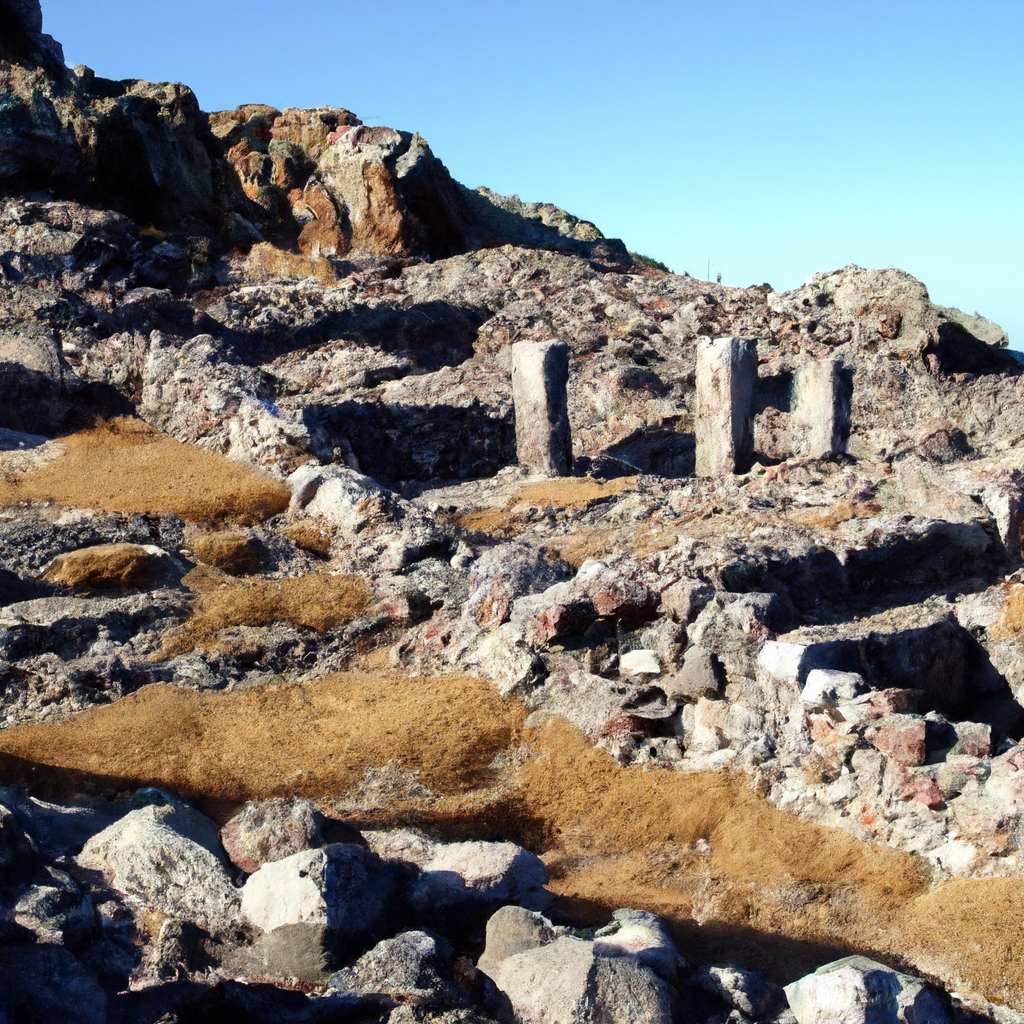
2. Historical Background
2.1 Origins and Early Settlement
The origins of Ancient Thira can be traced back to the 9th century BCE when Dorian settlers from Sparta arrived on the island. These early settlers established a prosperous city that flourished for centuries.
2.2 Minoan and Mycenaean Influence
During the Bronze Age, Ancient Thira came under the influence of the Minoans and the Mycenaeans. These ancient civilizations left their mark on the island, as evidenced by the architectural and artistic styles found in the ruins of Ancient Thira.
2.3 Persian and Roman Rule
In the 6th century BCE, Ancient Thira fell under Persian rule, only to be liberated by the Athenians during the Persian Wars. The island later came under Roman control, experiencing a period of prosperity under Roman rule. The ruins from these periods showcase the diverse influences and architectural styles that shaped Ancient Thira.
3. Architecture and Structures
3.1 The Lower City
The Lower City of Ancient Thira was the residential area of the ancient settlement. It is characterized by its narrow streets, houses, and public buildings. Visitors can explore the well-preserved ruins of these structures and gain an understanding of daily life in ancient times.
3.2 The Agora
The Agora, or marketplace, was the heart of Ancient Thira’s social and economic activities. Here, traders, artisans, and locals gathered to buy, sell, and socialize. The remains of the Agora give insight into the commercial and social interactions of the time.
3.3 The Sanctuary of Artemidoros
Dedicated to the Greek goddess Artemis, the Sanctuary of Artemidoros offers a glimpse into the religious practices of Ancient Thira. With its temple ruins and altars, visitors can imagine the spiritual significance of this sacred space.
3.4 The Gymnasium and Theatre
The Gymnasium and Theatre complex stands as a testament to the importance of physical and intellectual pursuits in ancient Greek society. The well-preserved structures provide a glimpse into the educational and recreational activities of the time.
3.5 The Byzantine Era Structures
Although Ancient Thira was abandoned in the 8th century CE after the eruption of the nearby volcano, the site was later occupied during the Byzantine period. The Byzantine structures, including churches and fortifications, highlight the enduring legacy of Ancient Thira.
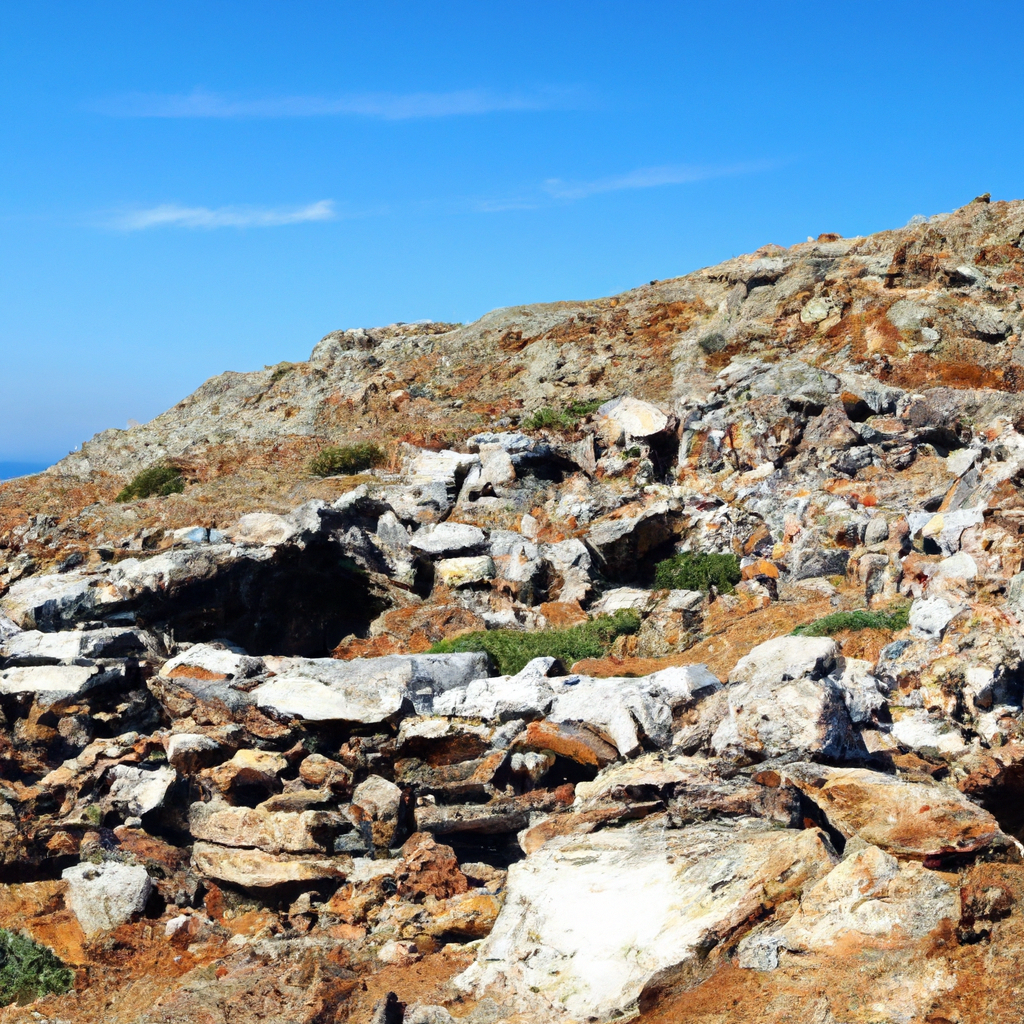
4. Art and Artifacts
4.1 Pottery and Vases
The pottery and vases found at Ancient Thira are a treasure trove of artistic expression. Decorated with intricate designs and illustrations, these artifacts offer insights into the daily life, religious beliefs, and artistic traditions of the ancient inhabitants of Thira.
4.2 Sculptures and Statues
The sculptures and statues discovered at Ancient Thira exhibit the mastery of ancient Greek craftsmen. From life-size statues to intricate reliefs, these artistic creations depict gods, goddesses, mythical creatures, and historical figures, providing a visual narrative of ancient stories and beliefs.
4.3 Frescoes and Mosaics
The frescoes and mosaics found in Ancient Thira’s ruins showcase the ancient skill of painting and tile work. These colorful and detailed artworks adorned the walls and floors of buildings, depicting scenes from mythology, daily life, and religious ceremonies.
5. Daily Life in Ancient Thira
5.1 Economic Activities
Daily life in Ancient Thira revolved around various economic activities, including agriculture, trade, and craftsmanship. The fertile volcanic soil of Santorini supported agriculture, while the strategic location of the island fostered trade and commerce with neighboring civilizations.
5.2 Social Structure
The social structure of Ancient Thira was hierarchical, with aristocrats, merchants, artisans, and farmers forming distinct classes. The elite enjoyed privileges, while the majority of the populace engaged in various occupations to sustain their livelihoods.
5.3 Religious Practices
Religion played a central role in the lives of the ancient Thirans, and religious rituals and ceremonies were held at various sanctuaries, temples, and altars. Ancient Thiran beliefs revolved around a pantheon of gods and goddesses, with offerings and sacrifices being made to ensure divine favor.
5.4 Education and Intellectual Pursuits
Education was highly valued in Ancient Thira, with young boys receiving tutelage in various subjects, including reading, writing, mathematics, music, and athletics. The Gymnasium and Theatre complex served as educational and recreational spaces, fostering intellectual and physical pursuits.
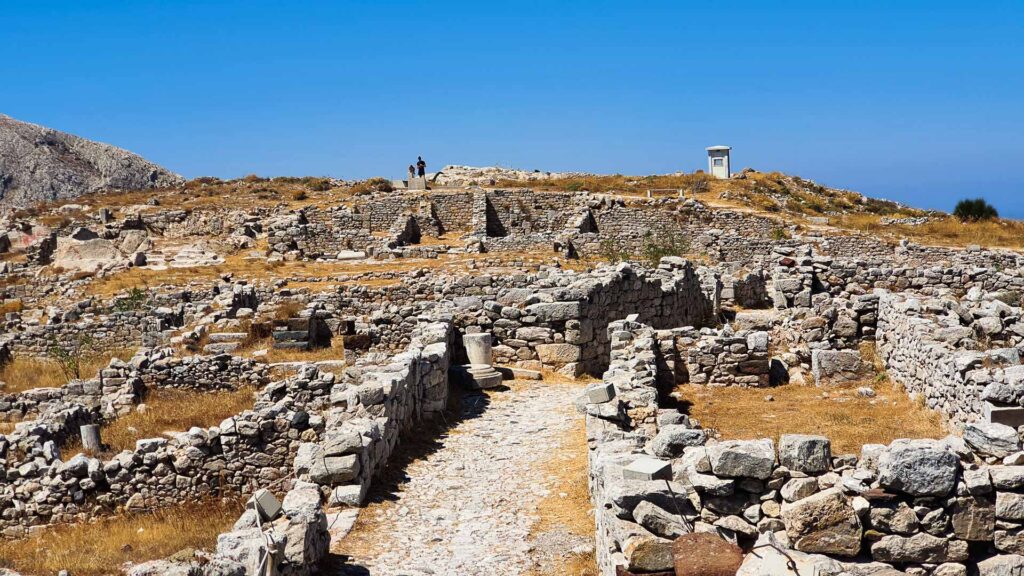
6. Excavations and Discoveries
6.1 Early Excavations and Discoveries
The first systematic excavations at Ancient Thira took place in the late 19th century, unearthing significant architectural structures, artifacts, and inscriptions. These early excavations provided a foundation for understanding the site’s history and laid the groundwork for subsequent research.
6.2 Recent Excavations and Ongoing Research
In recent decades, ongoing excavations and research have shed further light on Ancient Thira’s history and significance. Archaeologists have made significant discoveries, including well-preserved frescoes, artifacts, and evidence of ancient urban planning. These ongoing efforts continue to enhance our understanding of this captivating site.
7. Visiting Ancient Thira
7.1 Access and Transportation
Ancient Thira can be accessed by either hiking up the steep hill from the village of Kamari or by taking a bus or taxi from other parts of Santorini. The site is located approximately 360 meters above sea level, offering breathtaking views of the island and the Aegean Sea.
7.2 Tickets and Entry
Visitors to Ancient Thira must purchase a ticket at the entrance. The ticket allows access to the site and supports ongoing preservation and conservation efforts.
7.3 Guided Tours
Guided tours are available at Ancient Thira and provide insightful commentary on the site’s history, architecture, and significance. These tours offer a deeper understanding of the ancient world and allow visitors to fully appreciate the ruins and artifacts.
7.4 Nearby Attractions
After exploring Ancient Thira, visitors can enjoy the picturesque village of Kamari, known for its black sand beach and charming tavernas. Additionally, the nearby archaeological site of Akrotiri, famed for its Minoan ruins, is a must-visit destination for history enthusiasts.
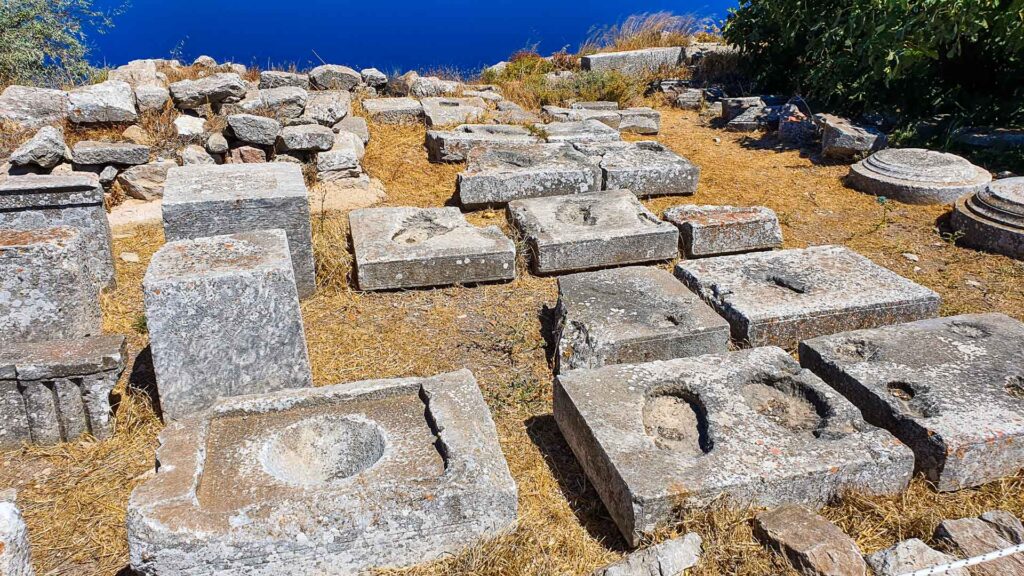
8. Preservation and Conservation
8.1 Preservation Efforts
Preserving the ruins of Ancient Thira is of utmost importance to safeguard its cultural heritage. Ongoing preservation efforts include the consolidation of structures, the protection of artifacts, and the implementation of site management plans to prevent further deterioration.
8.2 Challenges and Threats
The volcanic nature of Santorini poses unique challenges to the preservation of Ancient Thira. Erosion, seismic activity, and the impact of tourism all pose threats to the site. Balancing conservation needs with public access and tourism demands is crucial in ensuring the long-term sustainability of Ancient Thira.
9. Understanding Ancient Thira’s Legacy
9.1 Influence on Greek Culture
Ancient Thira’s legacy extends beyond its physical ruins. The site’s influence on ancient Greek culture can be seen in its architectural styles, artistic traditions, and religious practices. Understanding Ancient Thira provides valuable insights into the development of Greek civilization.
9.2 Impact on Archaeological Research
The archaeological discoveries at Ancient Thira have greatly contributed to our understanding of the ancient Mediterranean world. The excavations and ongoing research have provided valuable evidence of ancient trade routes, cultural interactions, and historical events, shaping our understanding of the past.
9.3 Importance for Tourism
Ancient Thira’s historical significance and breathtaking ruins make it a premier tourist destination in the Greek islands. The site offers visitors a unique opportunity to step back in time and experience the rich history of the ancient world. Its allure as a cultural and archaeological gem continues to attract visitors from around the globe.
In conclusion, Ancient Thira is a remarkable archaeological site that offers a comprehensive view of the history, architecture, art, and daily life in the Greek islands. Visitors to this captivating destination can not only explore the ruins but also gain a deeper understanding of the ancient Mediterranean world. The ongoing excavations and research at Ancient Thira ensure that its legacy continues to unfold, providing valuable insights into the past for generations to come. Whether you are a history enthusiast, a culture lover, or simply seeking a unique travel experience, Ancient Thira is a destination that cannot be missed.
